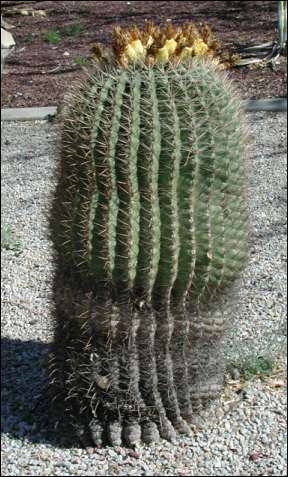

So, you're thinking of traveling in the desert? Probably the most important thing you'll need is water. What will you do for it? You can carry lots of water with you and plan to replenish it periodically, you can learn to tolerate dehydration, or you can wait for a rainy spell.
Like you, plants have the same choices. Succulents like cacti and agaves have taken the first route. They have large amounts of water-storing tissue recharged by an extensive, shallow root system able to soak up even the most meager moisture; or some, like agaves, use their leaves to channel water to the plant's base.
This isn't good enough, though. Water conservation strategies are
necessary, too--waxy coverings over stems and leaves; reduced surface area; tissues
that hold tightly to water; even specialized photosynthetic systems allowing them to
store the all important carbon dioxide during the cool night, letting them shut their
pores during the hot, dry days. The hundreds of species of succulents in the Chihuahuan
Desert testify to the success of this approach.

Listen to the Audio (mp3 format) as recorded by KTEP, Public Radio for the Southwest.
Contributor: Arthur H. Harris, Laboratory for Environmental Biology, University of Texas at El Paso.
Desert Diary is a joint production of the Centennial Museum and KTEP National Public Radio at the University of Texas at El Paso.

A mature barrel cactus, University of Texas at El Paso campus. Photograph by A. H. Harris.
Gibson, A. C. 1998. Photosynthetic organs of desert plants; structural designs of nonsucculent desert plants cast doubt on the popular view that saving water is the key strategy. BioScience.